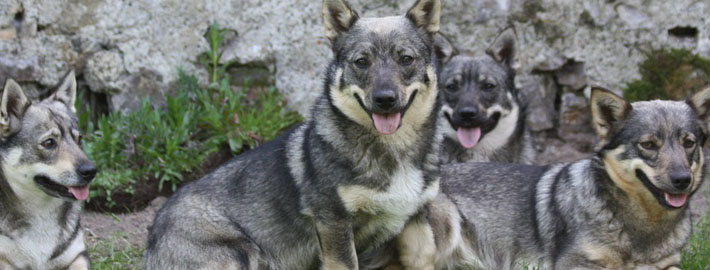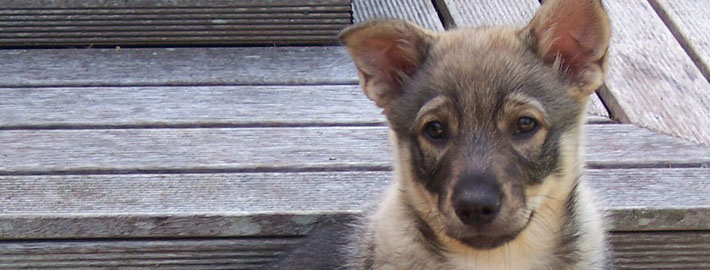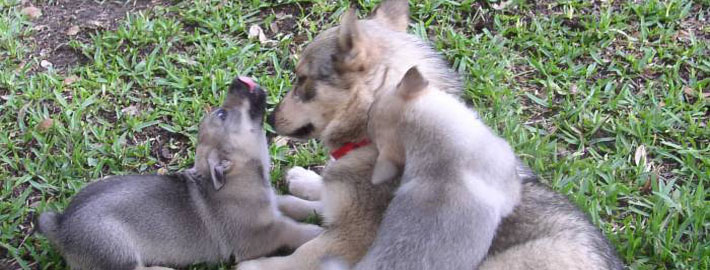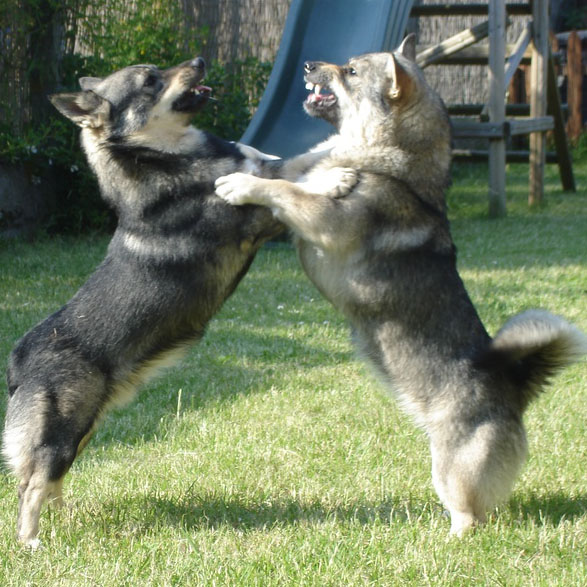What makes the Swedish Vallhund Unique?
This is a confident, lively, and curious dog with an independent streak, but he’s loyal to his family and courageous in alerting them to the presence of any strangers or other perceived dangers. The Vallhund is calm and adaptable, making him suited to many different home environments as long as he gets plenty of daily exercise. He loves his people and wants to be with them as much as possible.
Breed Groups
Page Contents
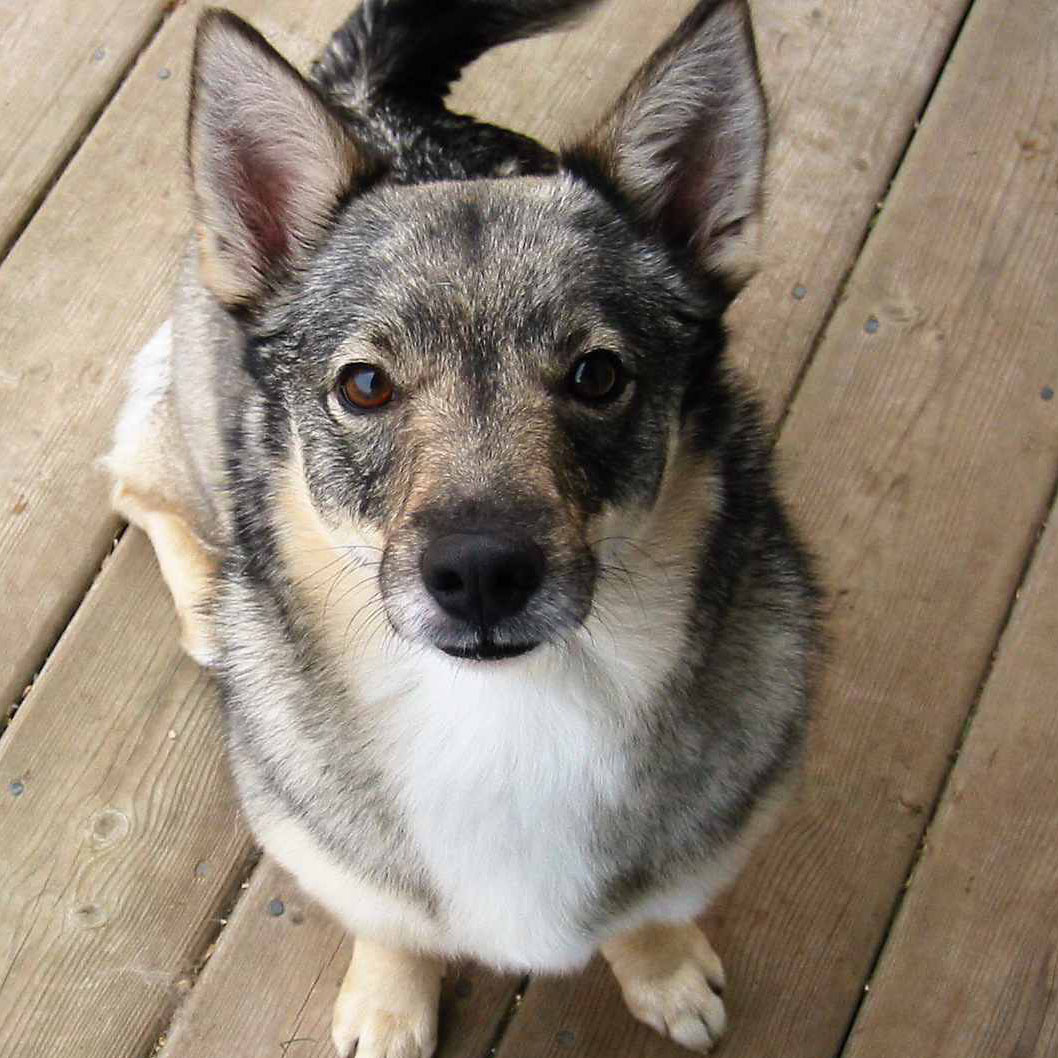
SnapShot
Is the Swedish Vallhund Right For You?
Swedish Vallhunds have been described as “big dogs in small bodies” because, despite their size, they are powerful and fearless. Even tempered with engaging personalities, they adapt well, enjoy being the center of attention, and are both fun and funny.Swedish Vallhunds make great family dogs and companions; they love people and are friendly, gentle, and loyal. They want to be included in family activities and should not be left alone for too long. They are good with children, but need to be socialized well and early with them, especially very young ones. Vallhunds herd by nipping at heels, so you will have to be firm in training your Vallhund away from this behavior.
In 5 Words
- Alert
- Energetic
- Friendly
- Fearless
- Intelligent
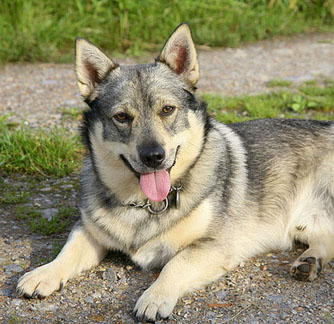
Characteristics
Learn About the Swedish Vallhund
Description
General Description
The Swedish Vallhund is a small, low to the ground, but sturdy dog. The head is rather long with a muzzle that looks square when viewed from the side, with a well-defined stop. The nose and lips are black. The teeth meet in a scissors bite. The oval-shaped, medium-sized eyes are dark in color. The ears are rather mobile, and firm from the base to the tip. The tail is either naturally long, stub, or bobbed, but is also sometimes docked. Note: docking tails is illegal in most parts of Europe. The neck is long and muscular. The legs are short, but powerful. Dewclaws are sometimes removed. The oval-shaped feet are medium in size, pointing straight ahead. The dog has a tight, harsh, medium length outer coat with a soft, dense undercoat. Coat hairs are slightly longer on the neck, chest and the back of the hind legs. Coat colors include gray, red-yellow, red-brown and gray-brown. May have a small amount of white markings. The dogs can have a well-defined mask with lighter hair around the eyes, muzzle and under the throat.
Short History of the Swedish Vallhund
The Vall is originally of Viking blood and has been identified as very similar to the Welsh Corgi. Although, which breed came first is debatable: did the Vikings bring their cattle dog over from Sweden or did they take the Corgi back to Sweden? Over the centuries, very little change was injected into the breed and they worked on Swedish farms, not only driving cattle but also being used for controlling vermin. However the breed did reduce in numbers and in 1942, Count von Rose realised that it was verging on extinction. He, along with Herr K G Zettersten, set up a breeding programme to increase the genetic pool and searched out 3 suitable bitches and one dog. One of these bitches is still thought of as being the ‘ideal’ Vall and it is her measurements that are used in today’s breed standard. The breed was introduced to the UK in 1973 when an in-whelp bitch was imported. Another two bitches and a dog followed shortly and these four dogs formed the foundation UK stock.
Temperament
The Swedish Vallhund is a responsive and even-tempered companion. It is intelligent and affectionate. He loves attention and instinctually craves leadership. Owners are never disappointed in his multi-faceted ability or his spontaneous sense of humor. Extremely active and devoted little dog. Be sure you are this dog’s pack leader to avoid Small Dog Syndrome, human induced behaviors where the dog believes he is above humans in the pack order. Dogs that do not clearly know their place in the pack can be untrustworthy with children, may begin to guard, bark obsessively, become wary of strangers, and be dog aggressive with other dominant dogs. Properly socialize this dog, providing rules he must follow, and limits as to what he can and cannot do, in order to avoid overprotective behaviors. These dogs sometimes try to herd people by nipping at their heels, although they can be trained not to do this. The Swedish Vallhund makes a good alarm dog, but should be told to quiet down after it has already given off its warning bark. This breed makes a great companion and can be used for herding and ratting. They also make excellent show and obedience dogs.
Caring for Your Swedish Vallhund
General Health
Swedish Vallhunds are a hardy and long living breed with few inherited genetic problems. The average life span ranges from fourteen to sixteen years, with many living longer. The oldest age on record for a Vallhund is twenty-seven years.
Care
Daily
This dog breed doesn’t have a history of health problems and is relatively easily groomed. They are an average shedder and should only bathe when needed. They need to be walked for exercise, but don?t require a yard to run around in because they are well enough indoors.
.
Grooming & Bathing
Grooming requirements are not great, a regular combing and brushing will keep the coat in good condition. Vallhunds do not cast their coat all the time, once a year being the norm. They are also free from dog odour.
Exercise & Training
Naturally active little dogs, they should always be encouraged to remain so. They need to be taken on a daily walk.

